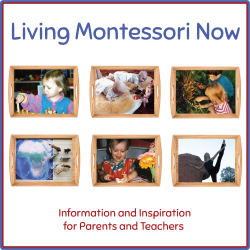I love the Montessori emphasis on peace education. I typically have a peace tray on my shelves each month. This month, I'm doing an entire peace unit. Our world needs more peace, and we need to do our part to help the children of the world grow up to be peaceful adults.
At Living Montessori Now, you'll find free peace printables. I'll be adding free mindfulness printables throughout the month as well.
You'll find many activities for preschoolers through first graders throughout the year along with presentation ideas in my previous posts at PreK + K Sharing. You'll also find ideas for using free printables to create activity trays here: How to Use Printables to Create Montessori-Inspired Activities.
At Living Montessori Now, I have a post with resource links of Free Printables for Montessori Homeschools and Preschools.
Disclosure: This post contains affiliate links (at no cost to you).
Montessori Shelves with Peace Themed Activities

You’ll find Montessori-inspired peace themed numbers, letters, and and more (part of my subscriber freebie pack, so just sign up for my email to get the link and password … or check the bottom of your latest newsletter if you’re already a subscriber)
One of my favorite peace books is the gorgeous National Geographic book A Little Peace. It has stunning photographs throughout with just a few meaningful words. At the end are the pages you see open on the right side of the top shelf. Those pages tell about each photograph and where it was taken. My continents globe is from Kid Advance on Amazon.
You could mix your peace-themed activities among your shelves according to curriculum area. Or you could have a special peace-themed area something like the one pictured. My shelves have a mixture of skill levels. Many of the activities can be adapted for a variety of levels. If you’re a homeschooler, just choose the activities that work for your child’s interests and ability levels. If you don’t have room for all the activities you’d like to do, simply rotate them.
Peace Books and Peaceful Character Work
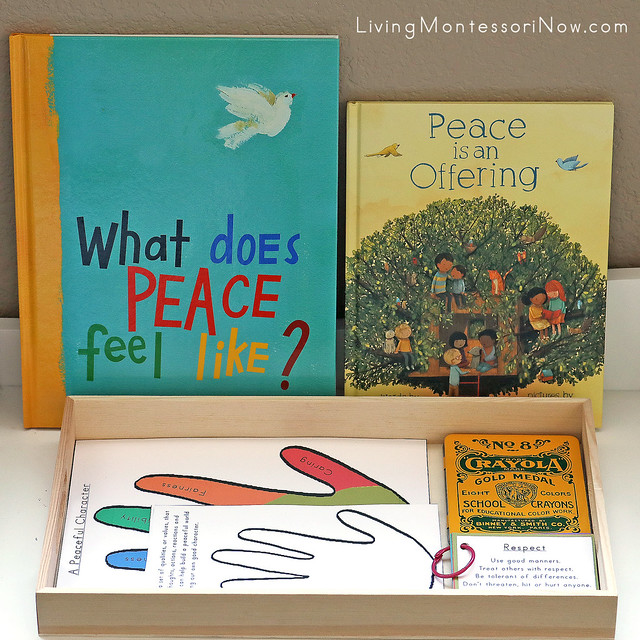
Free Printable: Peaceful Character from Montessori Print Shop I
love that the 6 pillars of peaceful character are respect, caring, fairness, responsibility, trustworthiness, and citizenship ... the same as the Character Counts 6 pillars of character. So this work is easily adaptable for children at a variety of ages worldwide.
This was so easy to prepare and is very adaptable. I simply printed out the materials and placed them on a Multicraft tray. Because my 5-year-old granddaughter, Zoey, loves small books, I made the 6 pillars descriptions into a little booklet using a binder ring. I added crayons so she can color each part of the hand after writing the words according to the character trait listed on the control chart.
Children Around the World Sorting Activity
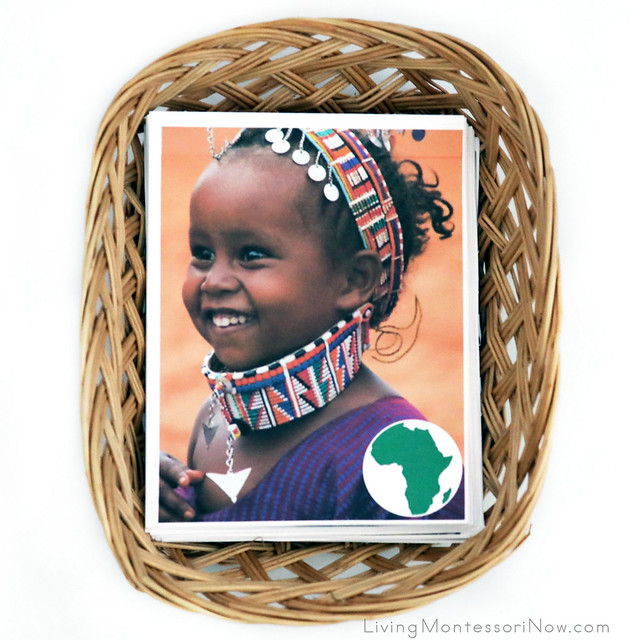
Free Printable: Children Around the World Cards from I Believe in Montessori at Teachers Pay Teachers
These beautiful photographs of children around the world can be used for a variety of levels. Toddlers can use a few at a time for a simple matching activity. Preschoolers can sort the cards by continent. Kindergarteners and early-elementary-age kids can find the country of each child on the globe. There are labels at the end with the country names. I'm planning to add the appropriate country name to the back of each card so that we can do some extra work with identifying countries.
P is for Peace Sand Writing Tray
Free Printables: Peace Symbol Letters for peace writing tray (part of my subscriber freebie pack, so just sign up for my email to get the link and password … or check the bottom of your latest newsletter if you’re already a subscriber)For the sand tray (see middle shelf above), I used the wooden tray from the Melissa & Doug Lace and Trace Shapes. You can use whatever tray or container work best for you, though. I had gotten some lovely white sand for making kinetic sand and other projects. I used that sand to make it more like a peace garden.
I also used polished stones for letter building. Zoey loves these stones, and they give it more of a meditative feel. I added the wooden stick from our wood tracing board for letter writing, although a tool isn't necessary.
If you would like help with introducing phonetic sounds, introducing objects with sounds, or beginning phonics in general, check out my DIY Beginning Montessori Phonics with Preschoolers.
Peace Word Analysis and Word Building with Phonogram Cards and Movable Alphabet
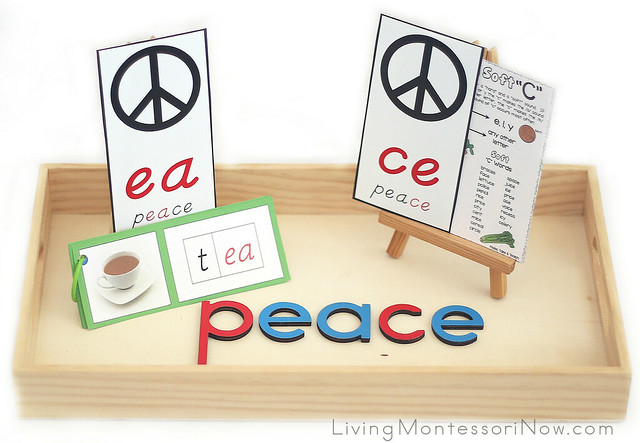
Free Printables: “ea" peace phonogram cards and "ce" peace phonogram cards (part of my subscriber freebie pack, so just sign up for my email to get the link and password … or check the bottom of your latest newsletter if you’re already a subscriber)
Free Printable: "ea" Sound with Letters from MontessoriSoul
Free Printable: Hard and Soft C and G Posters (reduced in size) from Make, Take and Teach
"Peace" is a tricky word for young children to analyze. So I made two phonogram cards. You can introduce "ea" and/or "ce" (soft c). For this type of work, Zoey will read the "ea" booklet. Then she'll read the words on the soft c card. After that, she'll build the word "peace" with the movable alphabet.
I have a post and video on how to introduce words starting with phonograms, even with very young children. There's an explanation of soft and hard c on the free printable. It's fine to use that explanation for the soft c.
DIY Dove Cards and Counters
Free Printables: Dove Numbers (part of my subscriber freebie pack, so just sign up for my email to get the link and password … or check the bottom of your latest newsletter if you’re already a subscriber)I love making DIY themed cards and counters to introduce odd and even and add interest and variety to cards and counters. I found these mini doves to add interest. You need exactly 55 buttons if you want to do the numbers and counters 1-10. The package contains 144 doves, so there are many for other activities, too.
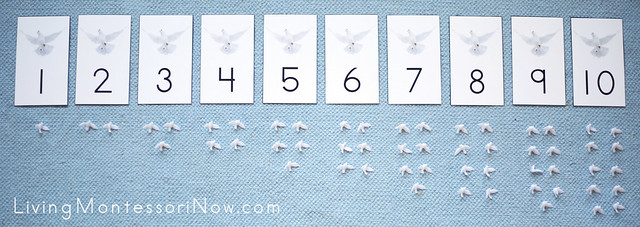
For Zoey and other kids who are already comfortable with symbol and quantity, I’ll typically use the cards and counters for hands-on addition, subtraction, and other mathematical operations. (See some of my other themed posts for ideas.) But sometimes I like to use the odd and even labels that are in our peace pack. The doves would be fun for addition and subtraction because some could "fly away" for subtraction, etc.
Hundred Chart Counting to 100 and Skip Counting Work with Peace Symbol Charms
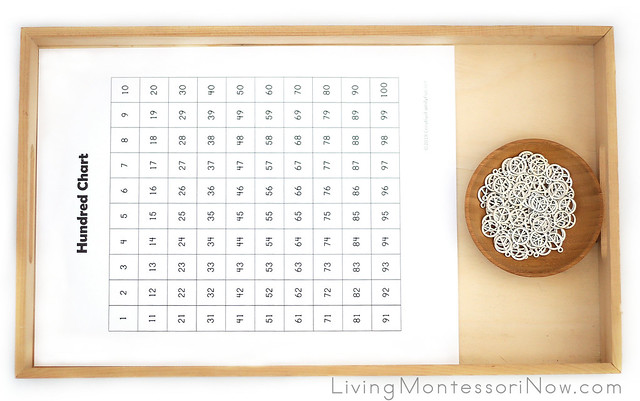 Free Printable: Hundred chart from Creative Family Fun
Free Printable: Hundred chart from Creative Family Fun I found these pretty vintage antique silver alloy peace symbol charms (100 pieces) inexpensively on Amazon. I like to use printable hundred charts to extend Montessori hundred board work. They're also wonderful for skip counting as well as adding and subtracting practice.
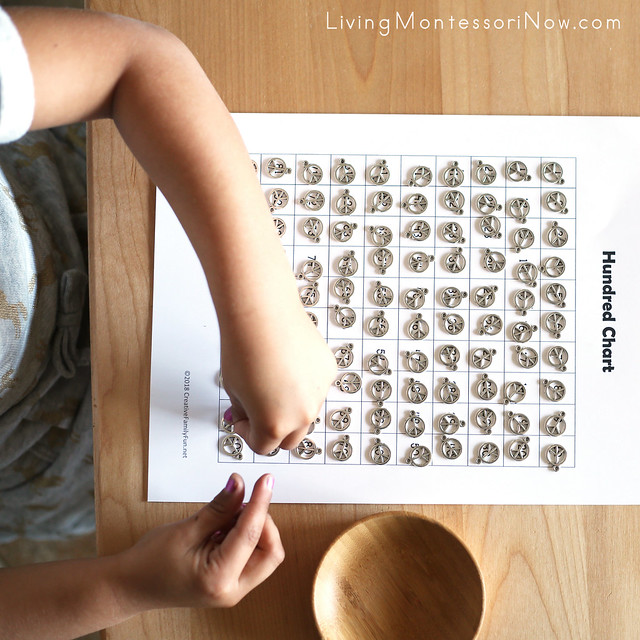
Zoey loved the little silver peace symbol charms and had fun counting to 100 while she placed a symbol on each square.
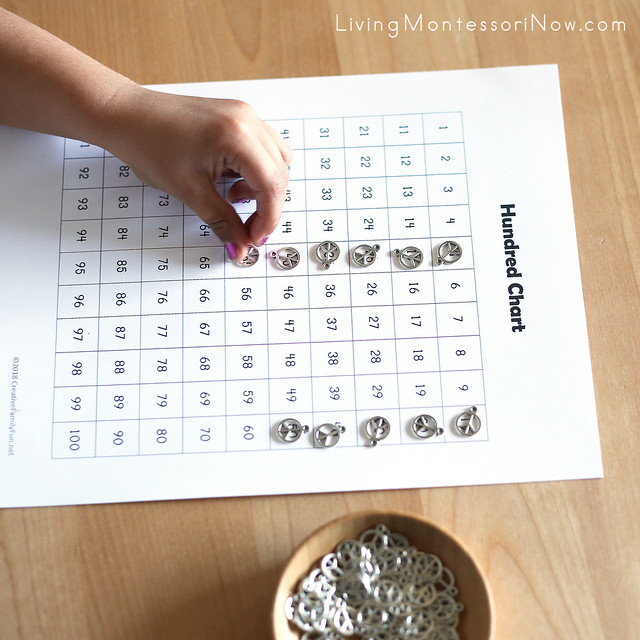
Then she enjoyed skip counting with the peace symbol charms. She used them to skip count by 2's, 5's, and 10's. It was a great activity!
Peacemakers Cards or Booklet
Free Printable: Peacemakers Cards from Natural Beach LivingThe cards on the bottom right of my shelves (see above) are some inspirational peacemakers (including Maria Montessori) and short biographies of each.
This is very easy to prepare. You can use these for matching or make a booklet like I did.
Montessori-Inspired Peace Pack (Living Montessori Now Subscriber Freebie)
Montessori-Inspired Peace Pack for DIY Cards and Counters, Number or Letter Matching, Number or Letter Basket, Bead Bar Work, Hands-on Math Operations, Number or Letter Salt/Sand Writing Tray, Letter Tracing, Phonogram Work, DIY Movable Alphabet, and Creative Writing (subscriber freebie, so just sign up for my email to get the link and password – or check your inbox if you’re already a subscriber)
More Free Peace Printables
Go to my post at Living Montessori Now for links to free peace printables from around the blogosphere: Free Peace Printables and Montessori-Inspired Peace Activities. And be sure to subscribe to my email list if you'd like to get an exclusive free printable each month (plus two more awesome freebies right away): Free Printables.More Peace and Mindfulness Activities and Resources
I'm including mindfulness activities because feeling peace within is a great step toward expressing peace toward others.- Montessori-Inspired Peace Education Activities,
- How to Prepare a Peace Corner
- Friendship Flower Activities
- Montessori-Inspired Friendship Activities
- Free Friendship Songs and Rhymes {Character Education Resources}
- Free Taking Turns and Sharing Songs and Rhymes {Character Education Resources}
- How to Teach Toddlers and Preschoolers to Take Turns and Work Together
- The Best Children’s Books about Taking Turns and Sharing
- How to Prepare a Montessori Peace Tray
- Montessori Services Peace Activities and Resources Review
- Equality and Peace Resources for Parents and Teachers
- The Silence Game {Montessori Activity to Develop Self Discipline}
- Free Guided Meditations for Kids {Mindfulness Resources}
- Free Guided Meditations for Deep Sleep and Relaxation {Mindfulness Resources for Teens and Adults}
- Free Guided Meditations for Deep Sleep for Kids {Mindfulness Resources}
- Best Nelson Mandela Quotes
- Free Guided Christian Meditations for Teens and Adults
- Free Guided Christian Meditations for Kids
- Free Guided Gratitude Meditations for Kids {Mindfulness Resources}
- Free Mindfulness Songs for Kids
- Fostering Kids’ Friendships Pinterest Board
Have a happy holiday season!

Deb Chitwood is a certified Montessori teacher with a master’s degree in Early Childhood Studies from Sheffield Hallam University in Sheffield, England. Deb taught in Montessori schools in Iowa and Arizona before becoming owner/director/teacher of her own Montessori school in South Dakota. Later, she homeschooled her two children through high school. Deb is now a Montessori writer who lives in San Diego with her husband of 43 years (and lives in the city where her kids, kids-in-law, and grandkids live). She blogs at Living Montessori Now.
